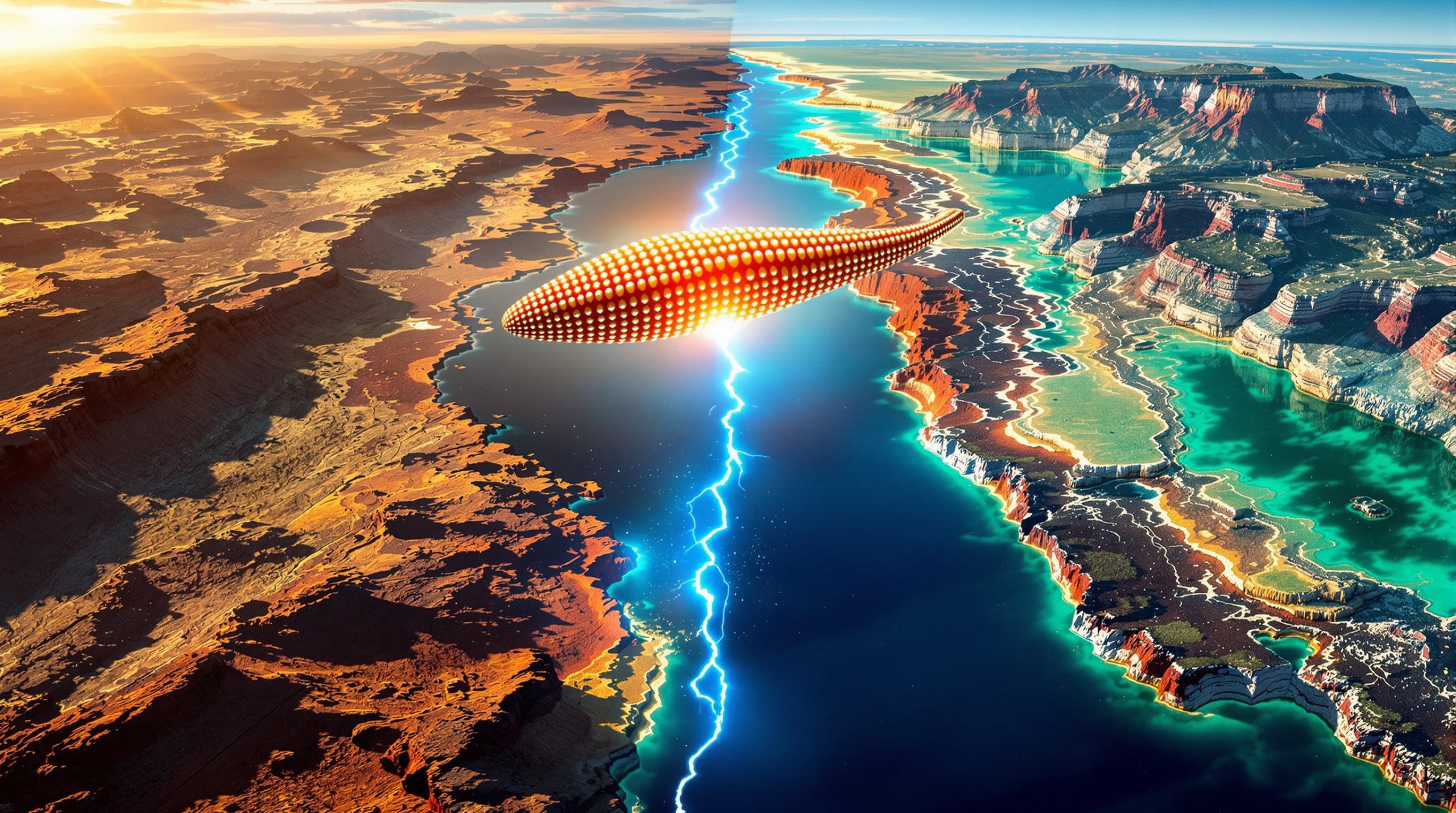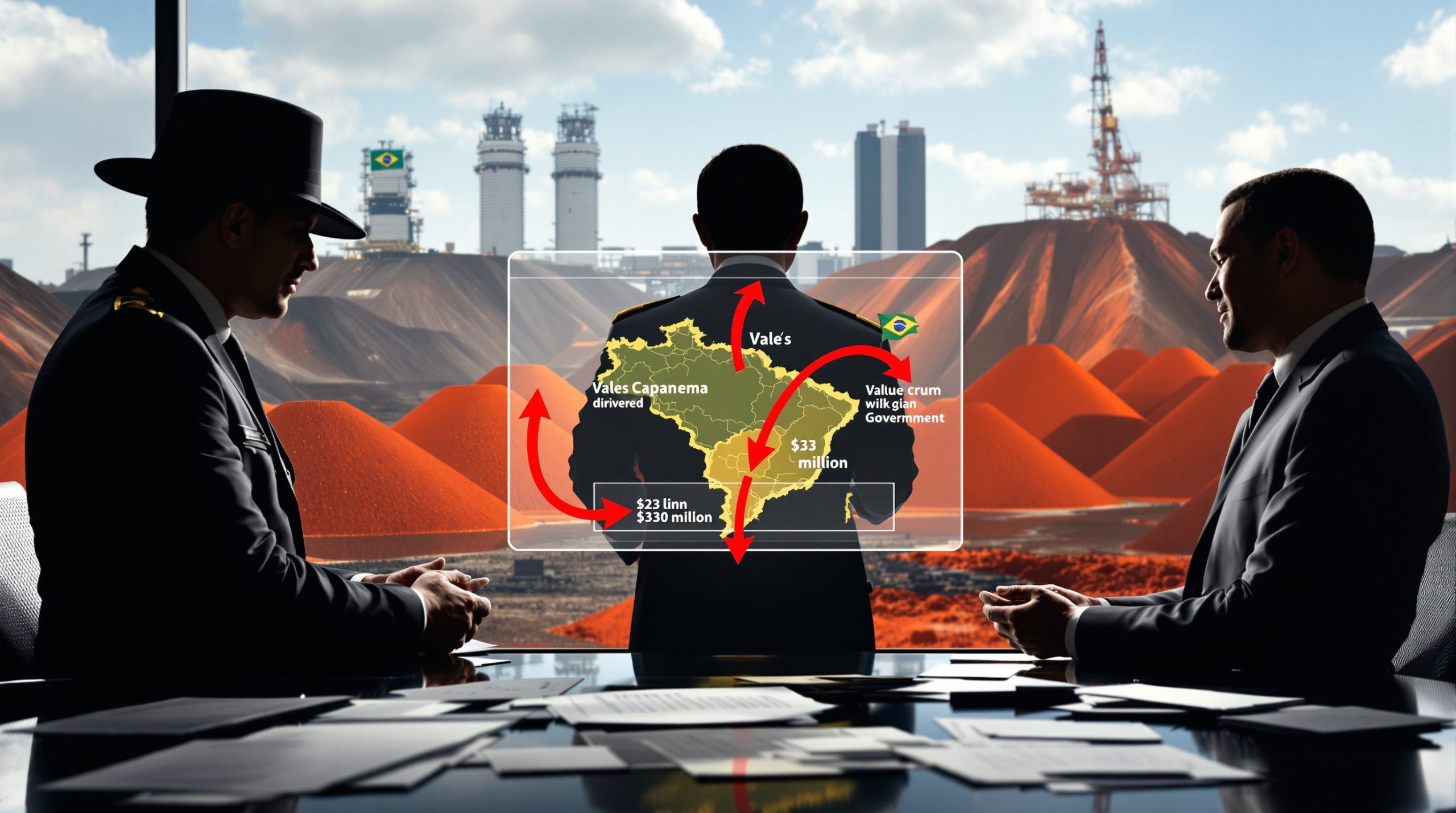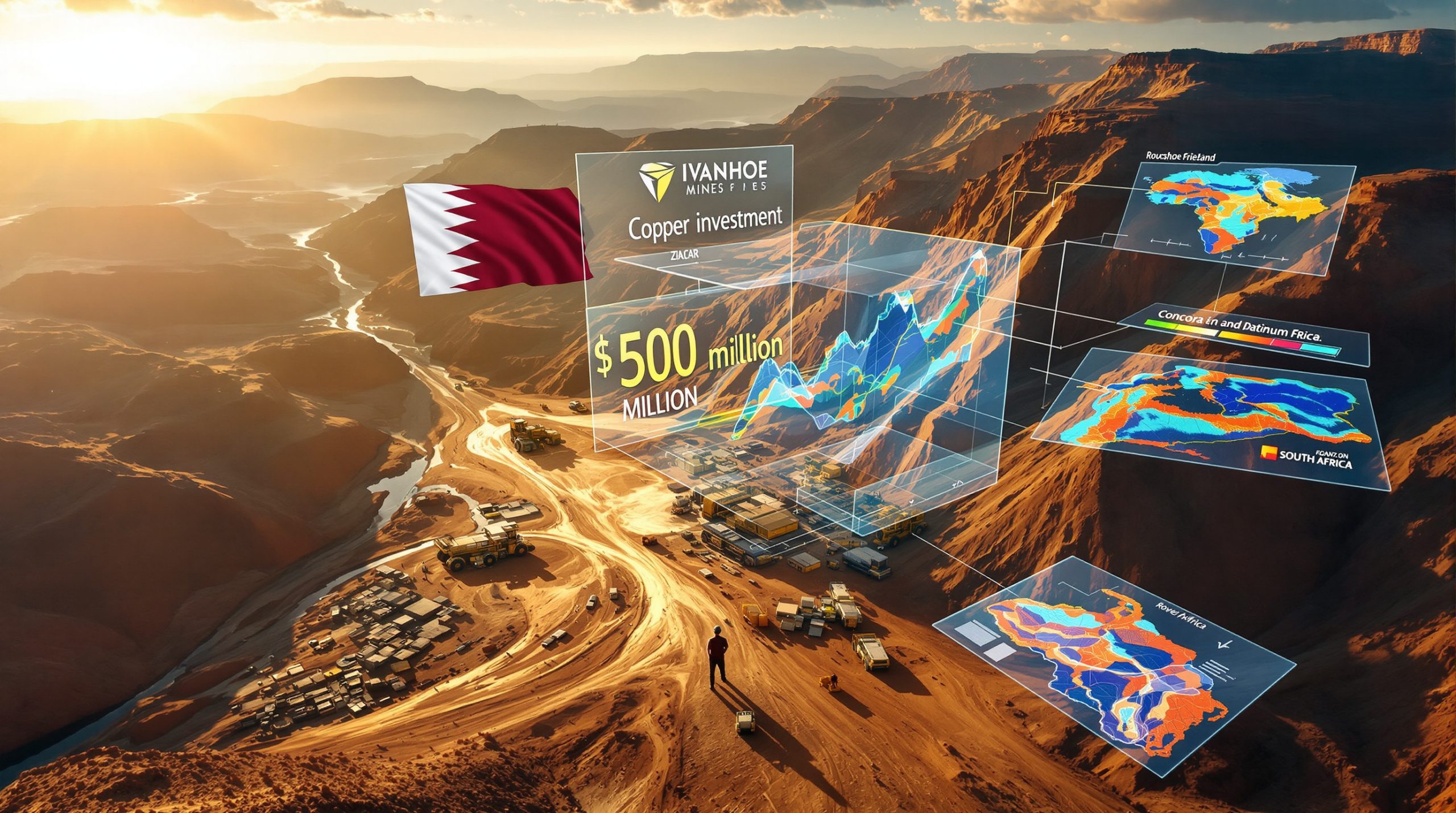Ancient Geological Connections: Tasmania's Rocky Cape Group and North America's Belt-Purcell Basin In northwest Tasmania, a remarkable geological story is unfolding. Researchers have discovered that Tasmania's oldest rock formations share a surprising connection with formations thousands of miles away in Montana and British Columbia. This unexpected relationship suggests these now-distant landmasses were once neighbors over a billion years ago—revealing a geological detective story that spans continents and reshapes our understanding of Earth's ancient past. The Unexpected Connection Tasmania, Australia's island state, has long been considered geologically distinct from mainland Australia. Recent research explains why—its oldest rocks formed in a completely different geological context, one that connects them to North America rather than the Australian mainland. The discovery that sparked this geological investigation came when a local prospector collecting stones for his veranda construction found unusual fossil patterns in Rocky Cape rocks. These fossils, identified as Horodyskia (sometimes called "string of beads"), represented early multicellular life forms that were first discovered in the Belt-Purcell Supergroup of Montana—immediately raising questions about a potential connection between these now-distant locations. These same distinctive fossils have also been found in limited locations around the world, including Western Australia, Siberia, and China, but their presence in both Tasmania and North America provided a crucial clue to the ancient relationship between these landmasses. When Did These Ancient Rocks Form? Dating Tasmania's Geological Past For years, geologists estimated the Rocky Cape Group formed sometime between 1 billion and 750 million years ago—a broad timeframe lacking precision. Without volcanic rocks (which are easier to date directly), researchers needed alternative methods to narrow down this timeline. The breakthrough came through advanced dating techniques focusing on two key minerals: Detrital zircon analysis: By examining tiny zircon crystals washed into the ancient basin, researchers could identify the age signatures of source rocks that contributed sediment to the basin. Authigenic monazite dating: Unlike transported zircons, monazite minerals formed in place between sand grains after deposition, providing minimum age constraints for the sedimentary sequence. These techniques revealed that the lower Rocky Cape Group formed approximately 1.45-1.33 billion years ago—significantly older than previously thought and overlapping with the timeframe of Belt-Purcell Supergroup formation in North America. Matching Age Signatures Across Continents When scientists compared the "age fingerprints" of Rocky Cape zircons with those from the Upper Belt formations in North America, they found striking similarities. Both sequences showed prominent age peaks around 1715, 1790, and 1450 million years. This matching pattern strongly suggested that sediments in both locations came from similar source regions—despite being separated today by the entire Pacific Ocean. The combination of similar fossil records, matching mineral age signatures, and comparable sedimentary features provides compelling evidence that these rock formations, now separated by thousands of miles, once formed part of the same geological basin. How Were Tasmania and North America Connected? The Supercontinent Connection: Nuna and Rodinia The explanation for this geological relationship lies in Earth's supercontinent cycles. Around 1.7 billion years ago, most continental landmasses had assembled into a supercontinent called Nuna (also known as Columbia). This massive landmass remained relatively stable for hundreds of millions of years before beginning to break apart around 1.4 billion years ago. During this rifting phase, large sedimentary basins formed as the crust stretched and thinned. The Belt-Purcell Basin in western North America represented one such extensional basin, accumulating up to 20 kilometers of sediments. The evidence suggests that Tasmania, likely attached to East Antarctica at the time, sat adjacent to western North America within this same basin system. This connection persisted even as Nuna transitioned toward the next supercontinent configuration, Rodinia, which assembled around 1.1-0.9 billion years ago. The upper portions of the Rocky Cape Group show similarities with Grand Canyon sequences from the Rodinian period, suggesting a long-lived connection between these regions. The Continental Drift Mystery One of the most intriguing aspects of this research involves the question of whether Nuna fully broke apart before Rodinia assembled. Traditional models based on paleomagnetic data suggest Australia-Antarctica and North America separated significantly around 1.2 billion years ago, only to converge again during Rodinia's formation. However, this scenario presents a problem: if these continents completely separated and then reconverged, we would expect evidence of a major mountain-building event along their margins—similar to the Himalayas forming when India collided with Asia. This evidence is largely absent. An alternative hypothesis suggests the continents never fully separated between Nuna and Rodinia, instead remaining in proximity while undergoing relative movements. The geological connections between Tasmania and North America may help resolve this puzzle as research continues. What Economic Implications Does This Connection Have? Mineral Potential in Tasmania The Belt-Purcell Basin in North America hosts world-class sedimentary-hosted ore deposits containing copper, lead, zinc, and silver. If Tasmania's Rocky Cape Group formed in the same basin system, it raises exciting possibilities for similar mineral deposit tiers on the island. Recent research has identified mineralization prospects in northwest Tasmania with age signatures matching those found in Belt-Purcell deposits. While no economic-scale deposits have yet been discovered in Tasmania's equivalent rocks, this geological connection opens new exploration opportunities based on the well-established mineralization models from North America. Geological research has revealed that fluid flow events affected both regions, depositing metals within these basin systems. Dating of galena (lead sulfide) from Tasmanian prospects shows ages very similar to those found in Belt-Purcell mineralization, strengthening the case for potential undiscovered resources. Industry Insight: The application of North American exploration models to Tasmania represents a valuable opportunity for mineral exploration importance. By understanding the genetic relationship between these distant rock formations, geologists can apply proven exploration techniques developed in Montana and British Columbia to identify potential ore bodies in northwest Tasmania. How Did Tasmania End Up Near Australia? Tasmania's journey from North America's neighbor to Australia's island state involved complex plate tectonic movements over hundreds of millions of years. As Rodinia broke apart around 750 million years ago, Tasmania eventually separated from North America and Antarctica. Much later, Tasmania collided with and became attached to mainland Australia—meaning Tasmania has actually been geologically connected to North America for longer than it has been part of Australia. This explains why Tasmania's oldest rocks bear little resemblance to those of mainland Australia. The South Tasman Rise, an underwater crustal block south of Tasmania, contains rock signatures characteristic of the Grenvillian orogeny in North America, providing additional evidence of Tasmania's ancient North American connection. Different models exist for Tasmania's exact positioning during the breakup of Rodinia—it may have initially remained with either North America or Antarctica before eventually colliding with mainland Australia. This complex history explains why Tasmania's geology differs so significantly from the Australian mainland. What Does This Research Tell Us About Earth's History? The connection between Tasmania and Belt Purcell rocks provides a crucial piece in reconstructing ancient supercontinent configurations. By matching specific rock sequences across continents, geologists can better understand how landmasses were arranged over a billion years ago. This research also demonstrates how seemingly isolated geological regions can preserve evidence of ancient connections that predate current continental arrangements by hundreds of millions of years. The Rocky Cape Group serves as a "geological memory" of Tasmania's distant past alongside western North America. Furthermore, this work highlights the value of multiple dating techniques and cross-continental comparisons in resolving long-standing geological puzzles. The combination of fossil evidence, mineral dating, and stratigraphic analysis provides a much more complete picture than any single approach could offer. Beyond Continental Configurations This research contributes to our understanding of how life evolved during the Proterozoic era. The Horodyskia fossils found in both locations represent some of Earth's earliest complex multicellular organisms, providing insights into how life was developing during this critical period in Earth's history. The study also demonstrates the importance of local knowledge and citizen science in geological discoveries. The initial finding of the Horodyskia fossils by a local prospector collecting stones for his veranda highlights how significant scientific breakthroughs can come from unexpected sources. What Future Research Directions Exist? Several promising research avenues remain: Further exploration of mineral potential in Tasmania's Rocky Cape Group based on Belt-Purcell models Additional dating and correlation of upper Rocky Cape sequences with North American counterparts Investigation of the South Tasman Rise (an underwater crustal block south of Tasmania) which may preserve additional evidence of ancient continental connections Refinement of supercontinent models to better explain the transition between Nuna and Rodinia Enhanced paleomagnetic studies to resolve questions about the extent of separation between continents during the Nuna-Rodinia transition As analytical techniques continue to improve, researchers will likely uncover more evidence clarifying Tasmania's ancient geological relationships and continental journey. Emerging Technologies and Methodologies Advanced isotopic analysis techniques are now allowing geologists to extract more detailed information from zircon crystals, including hafnium isotope ratios that provide additional "fingerprinting" of source regions. These techniques help refine continental reconstructions and better understand the provenance of sediments in ancient basins. Improved 3D geological modelling of basin formation and evolution may help resolve questions about the exact positioning of Tasmania relative to North America during these ancient time periods, providing better constraints on supercontinent configurations. Conclusion The geological connection between Tasmania's Rocky Cape Group and North America's Belt-Purcell Basin represents a remarkable example of how continents preserve evidence of their ancient configurations despite being separated by vast distances today. This research not only illuminates Tasmania's unexpected geological heritage but also contributes to our understanding of Earth's supercontinent cycles and the complex history of continental assembly and dispersal. For Tasmania, the implications extend beyond academic interest to potential economic opportunities in mineral exploration. Meanwhile, for geologists worldwide, this case study demonstrates how integrating multiple lines of evidence—from microscopic mineral analysis to basin-scale comparisons—can reveal continental connections across billions of years of Earth history. Disclaimer: While the geological evidence strongly supports the connection between Tasmania's Rocky Cape Group and North America's Belt-Purcell Basin, supercontinent reconstructions from over a billion years ago remain subject to ongoing research and refinement. Future discoveries may further modify our understanding of these ancient continental configurations. As researchers continue to investigate these ancient connections, we gain a deeper appreciation for the dynamic nature of our planet and how the continents we know today have undergone remarkable journeys through geological time—with Tasmania's unexpected North American connection being just one fascinating chapter in Earth's long history. Want to Stay Ahead of the Next Major Resource Discovery? Stay informed of significant ASX mineral discoveries as they happen with Discovery Alert's proprietary Discovery IQ model, delivering real-time insights for both short and long-term investment opportunities. Discover why major mineral discoveries can lead to exceptional returns by exploring Discovery Alert's dedicated discoveries page.

Ancient Tasmania-Belt Purcell Connection Reveals Continental History
Discover how Tasmania’s rocks reveal a surprising geological link to



